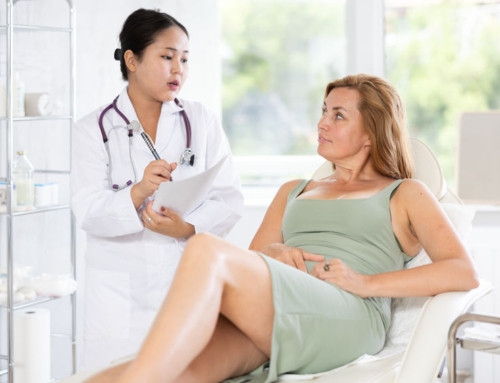The Connection Between IVF And OHSS
Ovarian hyperstimulation syndrome (OHSS) is the term used to describe the female body’s response to excessively high levels of reproductive hormones. OHSS is most commonly seen in patients undergoing assisted reproduction, including in vitro fertilization (IVF). Even in patients being treated for infertility with oral medications, like clomiphene citrate, OHSS is a potential side effect. Patients may want to learn more about the causes and treatment options to be prepared if this should happen during IVF.

Symptoms of OHSS
The clinical course of OHSS is variable, but symptoms generally start within 1-2 weeks of treatment with hormones. In mild to moderate OHSS, symptoms may include abdominal pain and bloating, nausea, vomiting, and diarrhea. In severe cases, bloating may become so severe that the abdomen becomes tensely distended, with rapid weight gain and reduced urine output. Some patients experiencing the most severe forms of the illness may develop dangerous blood clots in the extremities and lungs.
Who is at risk?
Experts have identified several risk factors for the development of OHSS. Polycystic ovarian syndrome, low body weight, and prior episodes of OHSS leave patients at an elevated risk. Women under age 35, who have more follicles available to produce eggs during the IVF process, are also at higher risk. To understand why this occurs, a basic understanding of IVF is helpful.
How IVF works
During normal conception, hormones signal the ovaries to release an egg from a single follicle once a month. This egg is carried through the fallopian tubes to the uterus, where sperm fertilizes the egg, resulting in the formation of an embryo. IVF is a surgical procedure that uses the same biological processes to create an embryo in the event of infertility. A woman is treated with high doses of reproductive hormones, which signal the ovaries to release eggs from several follicles in the ovaries. Under local anesthesia, a needle is passed through the wall of the vagina to collect these eggs directly from the ovaries. The eggs are then exposed to sperm, and embryos are created in the laboratory. Several days after fertilization, the embryos grow to roughly 10-150 cells. At this stage, embryos can undergo genetic testing for inherited diseases, be selected for implantation into the uterus, or be frozen for future use.
Overstimulated
The hormones used to stimulate egg growth and release from the ovaries are called gonadotrophins. Egg maturation and release is the intended outcome of treatment with gonadotrophins and is required for IVF to be performed. As many as 1 in 3 women will develop mild symptoms of OHSS during treatment with gonadotrophins. These patients may experience enlarged ovaries, multiple developing follicles, and extreme elevations in estrogen.
Reducing OHSS occurrence
Several strategies have been developed to reduce the risk of OHSS. A recent review summarized these options based on existing data from randomized controlled trials. The choice of gonadotrophin used to initiate egg growth or to finalize the egg maturation process has been shown to affect the risk of OHSS development. Good evidence supports the use of several common drugs like aspirin, metformin, and dopamine agonists to reduce the risk of OHSS occurrence. Treatment with calcium and albumin, a blood protein, have also shown fair results in reducing the risk of OHSS.
Help is available
Once patients develop OHSS, treatments must focus on managing the complications, including fluid leakage into the abdominal cavity and its influence on circulation. A procedure called paracentesis that drains fluid out of the abdominal cavity with a needle may be of benefit. Once symptoms develop, the first step is to seek medical attention.
OHSS management
Although not every patient experiences this complication, OHSS can occur in patients undergoing IVF. Risk reduction strategies can be employed to decrease the chance of this complication. In the event OHSS does occur, treatment is available. A healthcare provider can go over the risks and benefits of IVF, and discuss how best to manage OHSS if necessary.




